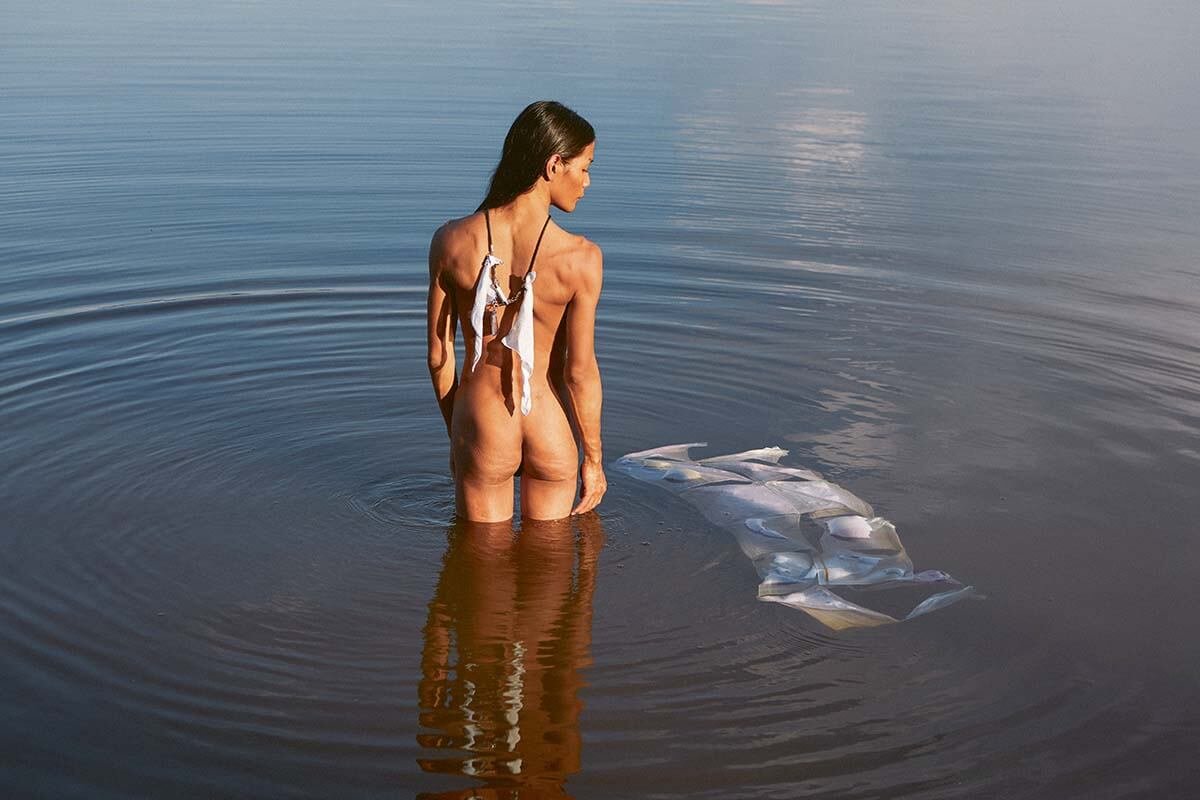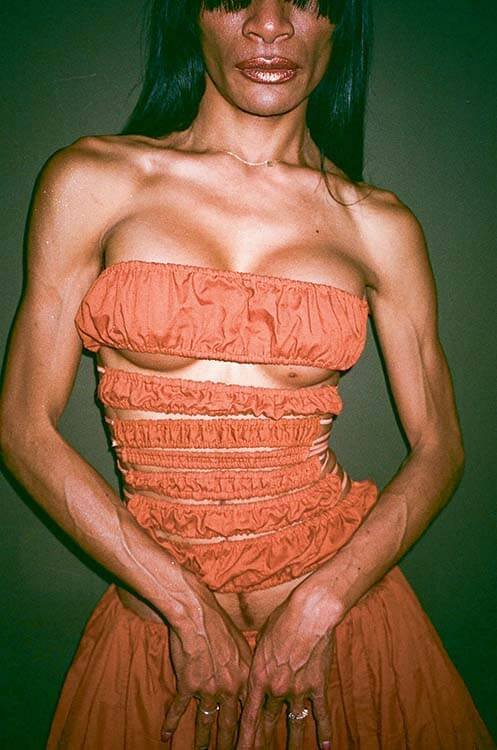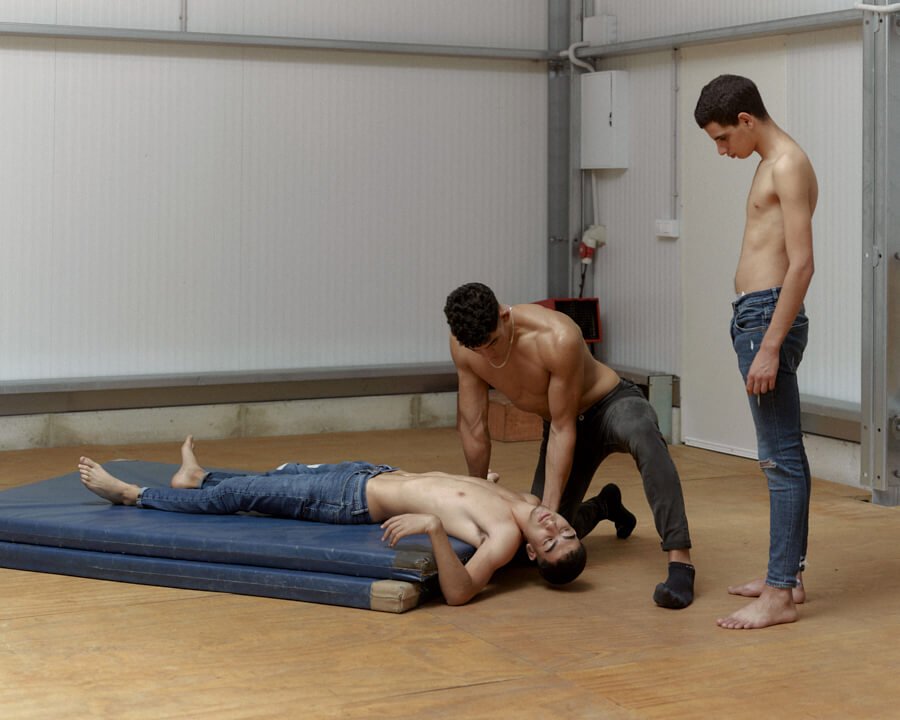Andrea Falchi
*If a Painting Could Speak
written Chidozie Obasi
Amid romantic thrills and emotive feels, Andrea Falchi grabs five with LE MILE to unpack his craft: one drip at a time.
How do you blend poignancy with the sweet, subversive frequency of a paintbrush? That’s the self-commissioned pursuit that emerging artist Andrea Falchi very much intends. “My canvases are part of an emotively-charged process, which I feed every so often based on the inner depths of my soul,” he freely admits, with no signs of peacocking braggadocio on display. “Through my paintings, I urge to convey a vision of sorts—of someone (or at times, something) that fades into the abstract, but at the same time it’s a subject that becomes familiar with quite a concealed aura.”
Truth be told, Falchi is part of the young wave of tastemakers who create art to express and deepen one’s feelings, drifting away from the faddish trends that are part and parcel of the contemporary world, commonly fed with commercially-appetible sources to satisfy market needs. But there’s more to the story. “I love experimenting with a wealth of techniques and processes, just like I love toying around with my emotions while I paint,” he says, blithely.
artist Andrea Falchi wearing
pullover RAMAEL
pants PAUL SMITH
artist Andrea Falchi wearing
total look JIL SANDER by Lucie and Luke Meier
watch
artist Andrea Falchi wearing
shirt PIERRE-LOUIS MASCIA
pants PAUL SMITH
“Most of my current paintings comprise the usage of wax and watercolours, where I create a marriage of both materials to unleash a textural sense of layering to add depth, volume and a soft roughness I’d say.” But references, can one ever have enough? “On the palette front, there’s a lightness that is juxtaposed to the duskier hues that are present in a few canvases, bringing to the fore a pool of references inspired by a further contrast between levity and profoundness.”
Cognisant of the hard work he puts in, the emotion-laced paintings are no mean feat: there’s a huge dose of soulfulness poured into the equation, teamed with a strong necessity to section his work to add emphasis to specific parts of the body.
“That’s a very good point!” He exclaims, adding that “there’s a severe willingness to punctuate certain parts of the body more than others to achieve not only a great aftermath within the layering facade, but to add a great balance of the human’s senses.” In other words? A feast for the senses: one that creates a delightful medley, a soul-charged chaos, a poised concoction that brings forth the practice of mixed media in a brand new light. The usage of layering and the artist’s expertise in colour is brilliant, and the gamut of hues that are being taken into account have been the transportive element which, as he says, “have been the catalysts for the multifaceted vision I have of human beings, abstract subjects and their respective representations which I firstly envision, figure out and then paint accordingly.”
“My canvases are part of an emotively-charged process, which I feed every so often based on the inner depths of my soul.”
Andrea Falchi
So here’s an idea for our current societal state. Stop co-opting propaganda that eulogises the arts but doesn’t physically invest in it, because young artists with big visions have the right to be acknowledged. In times of social unrest and political strife, minds like that of Falchi teach us so much about the power of creativity and its impact on one’s inner self. Because, as I’ve previously detailed, emotion counts. And such is the case for his practice: his thoughts are hardly compatible with most of his peers, which look to the dynamics of introspection as a way to reach full potential when creating art. That being said, there is a profound quality in looking at art created by young talents.
It’s hard to escape the common impression that this is a different process when rooted in practices where artists’ sensibilities are so normalised it does not demand a response – and where prejudice does not constantly invade their conceptual space. For Falchi, however, there is never a bad time to simply show heartfelt works of art, knowing that they speak for themselves. “I’m eager for my creative sensitivity to be something very personal, but with time I hope for it to gain a broader reach.” And just like Andrea, I very much hope the same.
credits
seen DAVIDE FRANDI
fashion director + stylist CHIDOZIE OBASI
video editor LUIGI BOATTO
artist ANDREA FALCHI





































